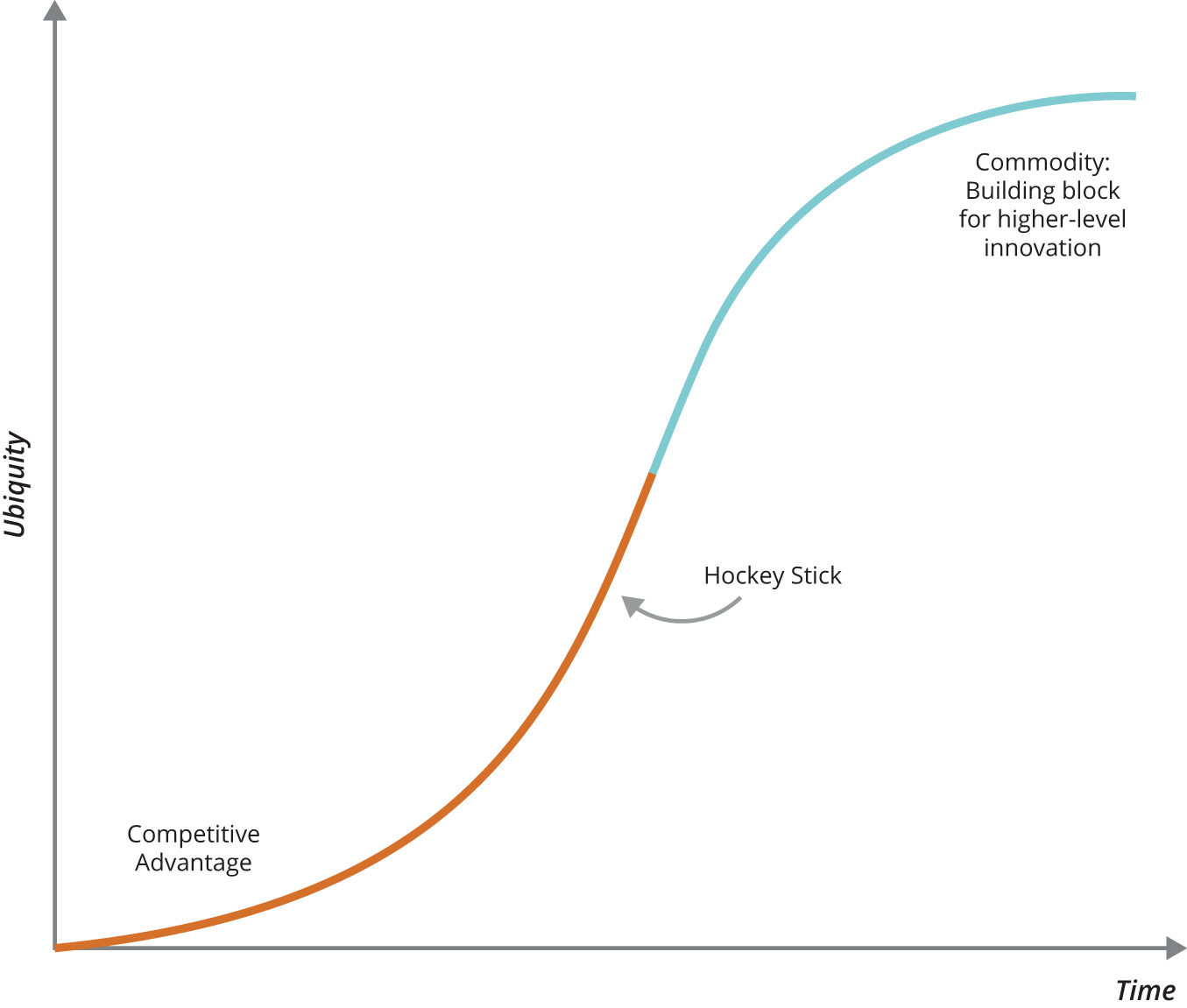Chapter 2. Manage the Dynamics of the Enterprise Portfolio
The purpose of a business is to create a customer.Peter Drucker
In this chapter we will examine the lifecycle of businesses and how companies can balance the exploration of new business models with the exploitation of proven ones. We’ll need this distinction in order to understand where lean startup practices and principles can be applied in an enterprise context and how they can be used as the basis of managing an innovation portfolio.
In his book Diffusion of Innovations, Everett Rogers describes the cycle through which all successful technologies and ideas progress, shown in Figure 2-1.1 Over time, all successful ideas, whether technologies, product categories, business models, or even methodologies, progress from being scarce and unevenly distributed to eventually becoming a commodity. They then form building blocks for new, higher-level, more valuable innovations. Of course the time it takes for innovations to progress through the various stages of the cycle can vary substantially.

Figure 2-1. The S-curve which shows the lifecycle of innovations
Rogers believed people could be classified into groups based on how they respond to innovation, as shown in Figure 2-2. Initially, new technologies and ideas are experimented with and tested by innovators, which form the smallest group of the overall population. As innovators ...
Get Lean Enterprise now with the O’Reilly learning platform.
O’Reilly members experience books, live events, courses curated by job role, and more from O’Reilly and nearly 200 top publishers.

